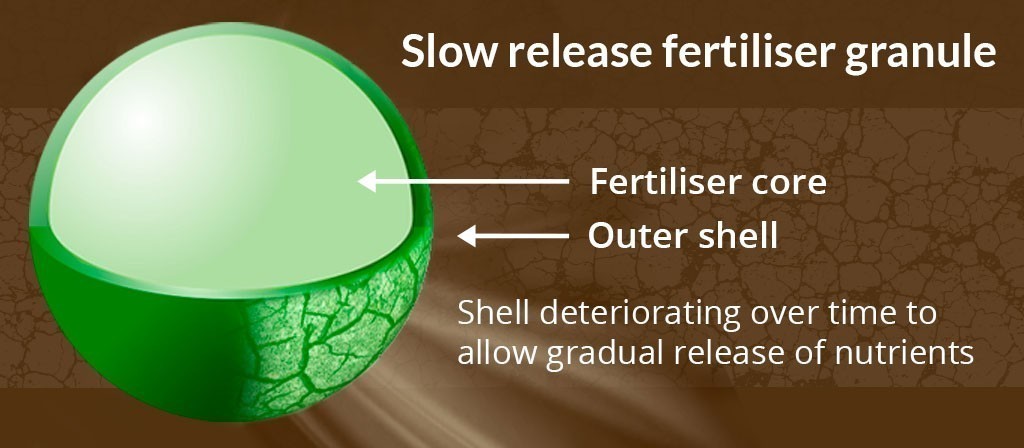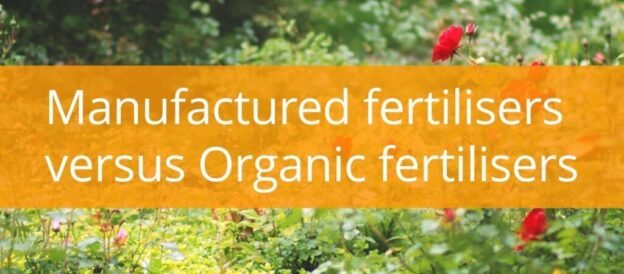Manufactured fertilisers versus Organic fertilisers
We are continuing to help the environment and reduce our carbon emissions so we thought we would have a look at the pros and cons of each type of fertiliser that we can use.
Manufactured fertilisers – How are these produced?
Plants require a balanced percentage of nutrients to produce a healthy plant, with added trace elements. Traditionally the main ingredients have been Nitrogen, Potassium and Phosphate.
Nitrogen is usually manufactured in large factories around the world mixing gas and air (air contains Nitrogen) adding CO2 to produce ammonia once this process has been completed, then the solution is made into a granule and transported in its raw state to the production facility. This process has its benefits to us as it provides the CO2 for the production of gas, used in the hospitality industry (pouring of beers in pubs), health care, electricity and the production of dry ice.
Potassium and Phosphate are commonly quarried from around the world in their raw state and transported to the UK.
Once these raw materials have arrived into the production facility the raw materials are blended with any trace element to the appropriate requirement and used either for agriculture or horticulture.
At this stage of production, the fertiliser can be made into a controlled-release fertiliser or a conventional fertiliser. A controlled-release fertiliser has a polymer coating added to each granule, as the correct temperature is reached within the soil the polymer cracks and starts to release over a certain period of time. The thicker the polymer the longer the duration of nutrient release.

A conventional fertiliser will release its nutrients once rainfall/Irrigation begins, however, if excess rainfall occurs then the nutrients have the potential of being leached through the soil profile before the plant has had the opportunity to be absorbed.
Conventional fertilisers release their nutrients quickly to the plant and this may cause problems with a flush of growth which makes the grass plant weak and subject to diseases such as Red Thread and fusarium at certain times of the year, excess mowing can increase the environmental impact.
Manufactured fertilisers ensure that each bag has the same amount of nutrients present and therefore application is uniform.
The cost of manufactured fertiliser can be volatile as there are various costs involved in transportation and production costs i.e. gas plus any external variables such as weather or political problems.
Organic based fertilisers
Organic-based fertilisers are manufactured from waste products from animals i.e. dried blood, feather meal, chicken manure, bone meal and kelp mixed with other micronutrients. The raw materials are blended together to produce a powder fertiliser, which can be difficult to apply evenly due to the density of the product.
There is obviously an increase in the smell of these products due to the materials used in production which may be an issue.
Initial thoughts are that these products are environmentally positive however there are a few issues with this.
Organic-based fertilisers have always had an issue with the exact analysis that they have due to the raw materials being dictated by the consumption by the animal and the quality of each nutrient produced within the raw product.
Once applied organic-based fertiliser will release its nutrients quickly into the soil and be available to the grass plant very quickly and will produce a flush of growth which once again will require extra mowing. However organic-based fertiliser does increase bacterial growth within the soil which helps with thatch reduction as the bacteria will eat the thatch as they increase.
Organic fertilisers
These types of products are produced either from fish manure, feather meal, blood meal, sewage sludge, seaweed, worm casts, or bone meal.
The above organic products are blended together to produce an analysis that suits the requirements of the plant i.e. turf, plants and shrubs however due to the amount of nutrients in the ingredients the analysis can be very low which has an impact on the environment and costs.
Due to the low nutrient content organic fertilisers need to be applied on a regular basis – normally every 12 weeks which if being applied by mechanical method extra fuel and labour costs are incurred. If applied to the flower borders or domestic lawn a planned fertiliser application is required to ensure healthy growth.
Organic fertilisers have a beneficial effect on the soil, they increase bacterial growth in the soil and increase the micro-nutrients which are available to the plant however if the nutrients are not used by the plant leaching through the soil profile can occur
Organic vegan-friendly Fertilisers
Plant-based fertilisers mainly feed the soil microbes which will transform the food into nutrients for plants for this to happen the soil must be warm and damp plus there have to be enough soil microbes within the soil for the start for this process to begin.
Plant-based fertiliser ingredients are mainly maize, sugar beet or silage they are manufactured by placing them in an anaerobic digester which mimics the digestive process of cattle. Once the process has been carried out the liquid is of a green/black appearance, this liquid can be mixed with water and applied to the grass. Alternatively, the liquid can be made into a pellet and applied by machine or by hand.
Due to the initial ingredients, there is little movement in its analysis and therefore has little nutrient value to plants and will require large amounts to be applied.

